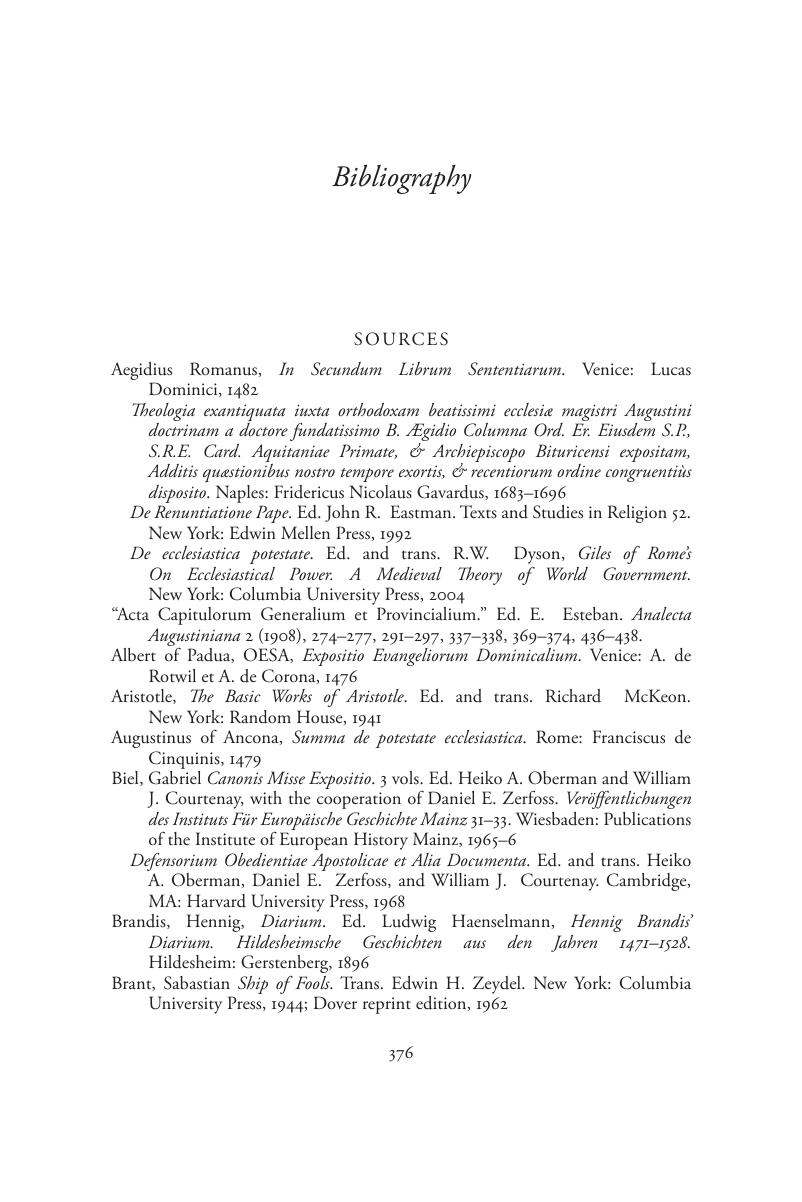Book contents
- Luther and the Reformation of the Later Middle Ages
- Luther and the Reformation of the Later Middle Ages
- Copyright page
- Contents
- Preface
- Abbreviations
- Introduction
- Chapter 1 The Reformation of the Later Middle Ages
- Chapter 2 Seeking God’s Mercy: Living the Augustinian Life
- Chapter 3 Discoveries and Breakthroughs
- Chapter 4 Luther’s Ways of Thought
- Chapter 5 Brother Martin Luther, Augustinian
- Chapter 6 Mother Church and the Pope
- Chapter 7 The Woe of the World: Luther from Friar to Reformer
- Chapter 8 The Failure of the Reformation
- Bibliography
- Index
- References
Bibliography
Published online by Cambridge University Press: 19 May 2017
- Luther and the Reformation of the Later Middle Ages
- Luther and the Reformation of the Later Middle Ages
- Copyright page
- Contents
- Preface
- Abbreviations
- Introduction
- Chapter 1 The Reformation of the Later Middle Ages
- Chapter 2 Seeking God’s Mercy: Living the Augustinian Life
- Chapter 3 Discoveries and Breakthroughs
- Chapter 4 Luther’s Ways of Thought
- Chapter 5 Brother Martin Luther, Augustinian
- Chapter 6 Mother Church and the Pope
- Chapter 7 The Woe of the World: Luther from Friar to Reformer
- Chapter 8 The Failure of the Reformation
- Bibliography
- Index
- References
Summary

- Type
- Chapter
- Information
- Luther and the Reformation of the Later Middle Ages , pp. 376 - 392Publisher: Cambridge University PressPrint publication year: 2017



